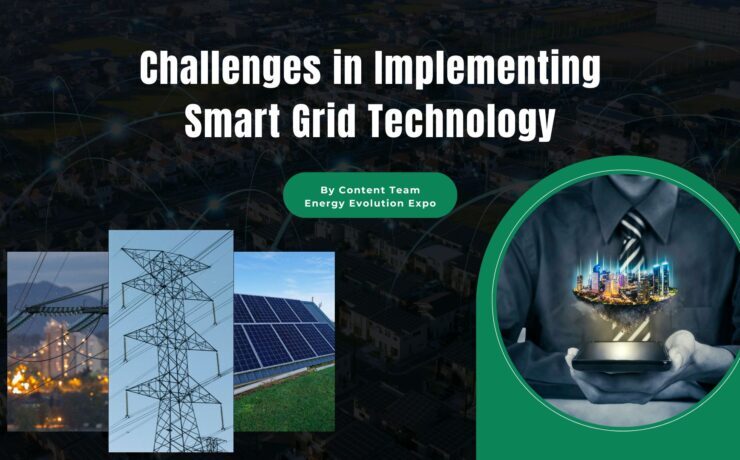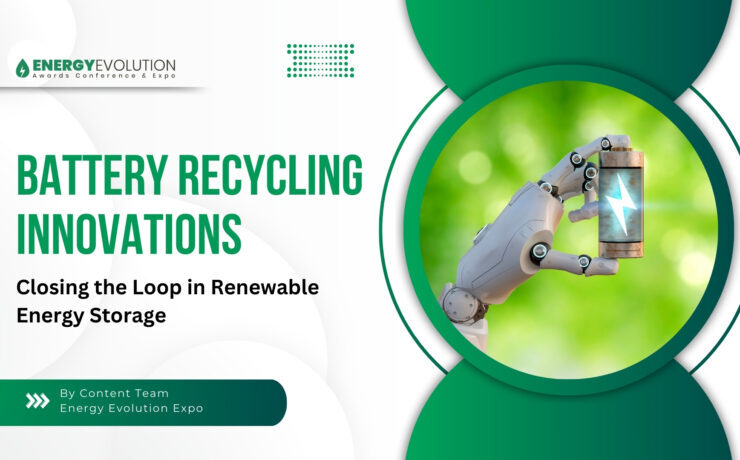Challenges in Implementing Smart Grid Technology

The transition from traditional power grids to smart grids represents a significant leap forward in how electricity is generated, distributed, and consumed. A smart grid utilizes digital communication technology to detect and react to local changes in usage, enhancing the reliability, efficiency, and sustainability of electricity services. Despite its potential, the implementation of smart grid technology faces several challenges. This blog explores these obstacles, supported by current examples and information.
1. Technological Integration and Interoperability:
In the realm of implementing smart grid technology, a crucial obstacle is the assurance of seamless technological integration and interoperability within a variety of systems and devices. Smart grids are dependent on an intricate system of sensors, meters, and communication devices, which may be developed by different manufacturers adhering to varying standards and protocols. It is imperative yet challenging to guarantee efficient communication among all these components.
An example of efforts in this area is the U.S. Smart Grid Interoperability Panel (SGIP), working towards establishing standards and protocols to tackle these challenges. Despite advancements, achieving complete interoperability is still an ongoing endeavor. Without standardized protocols, utilities could encounter challenges in merging new technologies with pre-existing infrastructure, resulting in inefficiencies and heightened costs.
2, Cybersecurity Threats:
Smart grids are particularly vulnerable to cybersecurity threats due to their reliance on digital communication and internet-based technologies. Cyberattacks targeting smart grids can result in power outages, data breaches, and structural damage to grid infrastructure.
The incident in Ukraine in December 2015, where approximately 230,000 people were left without electricity for several hours due to a sophisticated cyberattack, exemplifies the serious consequences of such threats. This case emphasizes the importance of implementing strong cybersecurity measures for smart grids. Stakeholders, including utilities and governments, are actively investing in cybersecurity measures to secure smart grid infrastructure.
However, the dynamic nature of cyber threats poses a continuous challenge, making regular updates, security audits, and the deployment of advanced threat detection systems imperative to ensure the security of smart grids.
3. High Initial Costs and Funding Issues:
Implementing smart grid technology requires a substantial initial financial investment due to the need to improve existing infrastructure, install new smart meters, and establish necessary communication networks. Obtaining the necessary funding can be a significant obstacle for many utilities, particularly smaller ones. In India, the government’s Smart Grid Mission seeks to modernize the power infrastructure but faces challenges due to the high associated costs hindering the pace of development.
While funding from both public and private sectors is crucial, budget limitations and competing priorities can impede smart grid project implementation. To overcome these financial barriers, various countries and regions are exploring innovative funding approaches. The European Union’s Horizon 2020 program, for instance, has allocated substantial funding for smart grid research and development. Additionally, public-private partnerships are being utilized to distribute the financial burden and propel advancements.
4. Regulatory and Policy Barriers:
Challenges in the implementation of smart grids also stem from regulatory and policy obstacles. The current regulations, often designed for traditional grid systems, may not be suitable for the adaptable and dynamic nature of smart grids. There is a need to update regulatory frameworks to be more accommodating of new technologies, business models, and market structures. In the United States, both the Federal Energy Regulatory Commission (FERC) and state-level regulators play pivotal roles in shaping the policy landscape for smart grids.
However, inconsistencies in regulations among states can impede the widespread adoption of smart grid technologies. It is imperative to streamline and unify regulatory frameworks to facilitate the transition. Moreover, policy uncertainties can discourage investment in smart grids. Clear and stable policies that offer long-term support for smart grid initiatives are essential to incentivize utilities and investors to engage in these projects.
5. Data Management and Privacy Concerns
Smart grids produce extensive data through sensors, meters, and other devices. Effectively managing this data poses a significant challenge. Utilities are required to establish systems for collecting, storing, analyzing, and responding to this data in real-time. The accuracy and reliability of data play a critical role in the effective functioning of smart grids.
Additionally, the deployment of smart grid technology gives rise to privacy issues. In-depth data on electricity consumption has the potential to expose personal information about consumers’ behaviors and routines. Safeguarding this data against unauthorized access and ensuring the protection of consumers’ privacy are of utmost importance.
Within Europe, the General Data Protection Regulation (GDPR) imposes strict guidelines on data protection and privacy. Utilities that adopt smart grid technologies must adhere to these regulations, thereby increasing the complexity of their data management endeavors.
6. Technical and Infrastructure Challenges:
The technical aspects of upgrading to a smart grid can be daunting. Many regions still rely on aging infrastructure that may not be compatible with new technologies. Retrofitting or replacing this infrastructure requires careful planning and significant investment.
For example, in the United States, the aging power grid is a major concern. The American Society of Civil Engineers gave the U.S. energy infrastructure a grade of D+ in its 2021 report card. Modernizing this infrastructure to support smart grid technologies is a massive undertaking that involves both technical and logistical challenges.
Additionally, integrating renewable energy sources, such as solar and wind, into the smart grid poses technical challenges. These sources are variable and intermittent, requiring advanced grid management systems to ensure stability and reliability.
7. Consumer Engagement and Acceptance:
In order for smart grids to achieve optimal effectiveness, it is imperative that consumers are actively engaged and receptive to the adoption of new technologies and practices. Nevertheless, there is a notable lack of consumer awareness and acceptance surrounding smart grid technology. Many consumers remain unaware of the advantages of smart grids and maintain a sense of skepticism towards novel technologies.
A primary example is the introduction of smart meters in the United Kingdom, which encountered resistance from certain consumers due to apprehensions about data privacy and potential health implications of wireless communication. It is essential to educate consumers on the benefits of smart grids and to address their apprehensions for successful integration.
Utilities and governmental bodies are collaborating to enhance consumer engagement through informative public campaigns, incentives, and clear communication regarding the benefits of smart grid technologies.
Given the significant potential benefits of smart grid technology, it is important to acknowledge that the road to its implementation is complex and riddled with challenges. These challenges encompass aspects such as technological integration, cybersecurity, substantial upfront costs, regulatory complexities, data management, technical considerations, and consumer involvement. Overcoming these hurdles demands a collaborative approach involving utilities, governmental bodies, regulatory authorities, and consumers.
By fostering teamwork and making concerted investments in research, development, and educational initiatives, it is possible to unlock the full potential of smart grids, ultimately paving the way for a more efficient, dependable, and sustainable energy landscape. The transition to sustainable energy sources is not just an environmental necessity but also an economic opportunity. Countries around the world, including those in Southeast Asia, are investing in renewable energy technologies, demonstrating their feasibility and effectiveness on a large scale.
As we move further into the 21st century, the continued development and deployment of these sustainable energy sources will be crucial in addressing the global energy crisis and mitigating the impacts of climate change. We need to keep up with all recent innovations to reap maximum benefits and to facilitate a better understanding of the latest developments and trends in the Renewable energy Industry, various Conferences and Expos, which bring Industry leaders together, serve as an all-inclusive platform. The Energy Evolution Awards, Conference, and Expo organized by Next Business Media is making its debut in Spain in 2025.
It will be a leading forum dedicated to honoring excellence in Energy Technology, showcasing innovations, and fostering collaborations. The events unite industry leaders, and visionaries to explore the latest advancements, tackle key challenges, and shape the future of Energy. The Energy Evolution Awards, Conference, and Expo will celebrate outstanding achievements, promote sustainable practices, and drive the Energy Industry forward into a technologically advanced sustainable era. Energy Evolution Awards, Conference, and Expo will be a platform for cultivating innovation and shaping a brighter, more efficient energy landscape.





